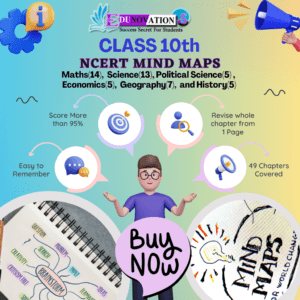Explore how NID’s student-led sustainable design competition finalists 2025 are transforming global sustainability with climate-conscious innovations.
India’s creative landscape took a transformative leap as students from the National Institute of Design (NID) earned a coveted spot among the student-led sustainable design competition finalists 2025. Their recognition in the prestigious Terra Carta Design Lab—spearheaded by Sir Jony Ive and King Charles III—has placed India firmly on the global map of climate innovation.
At the heart of this global initiative lies a powerful mission: enabling young designers to conceptualize scalable, sustainable solutions addressing the world’s most pressing environmental challenges. From tackling post-production waste to creating climate-resilient materials, the NID finalists are making waves through design-driven sustainability.
India’s Emerging Designers at the Forefront of Global Sustainability
This year’s Terra Carta Design Lab witnessed over 500 student applications from the world’s leading design institutions. Only 20 exceptional teams made it to the global finalist list—and among them stood three impactful projects from NID. These projects were not just design marvels but purpose-built innovations reflecting climate urgency and socio-environmental awareness.
Key Highlights:
- Projects aimed at circular economy through waste management.
- Emphasis on local materials like terracotta and denim.
- Innovation in eco-sensitive platforms for social wellness.
The student-led sustainable design competition finalists 2025 from NID India weren’t merely focused on product aesthetics but were rooted in social impact and eco-responsibility.
The Power of Design: Sustainable Innovation by NID Finalists
Let’s explore the ingenious solutions from these students that captured global attention.
🧱 Sustainable Upcycling Waste through Terracotta Construction
One of the projects focused on upcycled terracotta construction solutions. The team repurposed discarded terracotta waste, converting it into modular construction blocks. These eco-bricks offer thermal insulation, reduce carbon emissions, and are completely biodegradable. Such innovations highlight the untapped potential of indigenous materials in modern architecture.
🐾 Wildlife‑Vehicle Collision Prevention through Road Design
Another entry took a unique approach to biodiversity preservation. The project focused on designing wildlife‑vehicle collision prevention road safety design systems. Using motion sensors, reflectors, and road surface innovations, this idea merges technology with ecology—creating safer passages for both vehicles and wildlife.
🌱 Eco-Friendly Platform for Menstrual Wellbeing
Menstruation remains a stigmatized issue in many communities. An NID team tackled this by launching a menstrual wellbeing eco‑friendly platform student project. The biodegradable sanitary product system is paired with educational resources, promoting dignity, awareness, and sustainability.
Toppers Use Mind Maps to score more than 95%
NCERT Class 11th Commerce Mind Maps
Add to cartOriginal price was: ₹999.00.₹199.00Current price is: ₹199.00.NCERT Class 12th Chemistry Mind Maps
Add to cartOriginal price was: ₹199.00.₹75.00Current price is: ₹75.00.NCERT Class 12th Commerce Mind Maps
Add to cartOriginal price was: ₹999.00.₹199.00Current price is: ₹199.00.NCERT Class 12th Science Mind Maps
Add to cartOriginal price was: ₹999.00.₹199.00Current price is: ₹199.00.NCERT Mind Maps For Class 10th
Add to cartOriginal price was: ₹999.00.₹199.00Current price is: ₹199.00.
Purchase Today
What Global Experts Are Saying
Sir Jony Ive, former Apple design head and co-founder of the Terra Carta Design Lab, applauded the ingenuity of the Indian entries, stating,
“Design is a powerful agent of change. The projects emerging from NID represent a harmonious balance between tradition and innovation, deeply rooted in empathy and sustainability.”
Student-Led Design as a Climate Action Strategy
The Terra Carta initiative was launched under the Sustainable Markets Initiative by King Charles III. The competition aims to encourage actionable, scalable ideas. By empowering young creators, it reinforces the idea that design is not just about form—but about systemic transformation.
According to UNESCO, 70% of global waste remains unmanaged in developing nations. The student projects showcased by NID directly engage with this challenge by turning waste into opportunity—such as post-production denim waste upcycling sustainable fashion and climate-resilient construction materials.
Role of Educational Institutions in Sustainability
The success of NID students reflects the growing role of educational institutions in shaping environmental futures. This achievement echoes across India’s academic ecosystem, where platforms like Edunovations are making learning resources on sustainability accessible to young minds through:
- NCERT Courses
- Current Affairs
- [Notes & Mind Maps](https://edunovations.com/notes/, https://courses.edunovations.com/shop-2/)
- MCQs for Practice
- [Videos & Syllabus Insights](https://edunovations.com/videos/, https://edunovations.com/syllabus/)
For institutions aiming to build custom digital platforms to amplify such stories, Mart India Infotech offers tailored web development for schools and colleges.
Why This Matters for India’s Future
India is at the crossroads of climate vulnerability and innovation potential. By celebrating design-centric sustainability from institutions like NID, we showcase our readiness to address climate issues with indigenous wisdom and modern technology.
These student-led projects reflect:
- Low-cost implementation models.
- High replicability across urban and rural geographies.
- Alignment with the UN Sustainable Development Goals (SDGs).
Final Thoughts
The recognition of NID students as student-led sustainable design competition finalists 2025 goes far beyond international accolades. It signals a shift in how India’s youth are being groomed—not only as designers—but as problem-solvers, environmental stewards, and changemakers.
Their contributions through upcycled terracotta construction, wildlife‑vehicle collision prevention, and eco-friendly menstrual platforms offer replicable models for innovation. With proper support, mentorship, and exposure, these ideas could transform sectors—from infrastructure and public health to fashion and wildlife conservation.
🔍 FAQs
- What is the Terra Carta Design Lab?
It’s a global competition promoting sustainable design, initiated by King Charles III. - Who are the student-led sustainable design competition finalists 2025 from India?
Students from the National Institute of Design (NID), India. - What is upcycled terracotta construction used for?
It’s used to create sustainable, eco-friendly building materials. - How does wildlife-vehicle collision prevention road safety design work?
Through tech-enhanced road systems that reduce animal accidents. - What is a menstrual wellbeing eco-friendly platform student project?
A biodegradable sanitary product system promoting menstrual health. - How is denim waste upcycled in sustainable fashion projects?
By repurposing post-production denim into new garments or materials. - What is the Sustainable Markets Initiative?
An environmental initiative by King Charles III to promote sustainable markets. - How can students participate in such global design competitions?
By enrolling in accredited design institutions and submitting proposals through platforms like Terra Carta. - How does NID support climate-resilient design?
Through curricula and mentorship focused on sustainable innovation. - Where can I find study resources on environmental education?
You can visit Edunovations for NCERT courses, notes, and more.














